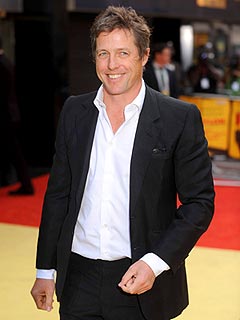Video posted on YouTube on Friday appeared to catch an explosion caused by a meteor streaking over the Russian city of Chelyabinsk.
Last Updated, 5:40 p.m. As our colleagues Ellen Barry and Andrew Kramer report, Russians recorded video of bright objects, apparently debris from a meteor, “streaking through the sky in western Siberia early on Friday, accompanied by a boom that damaged buildings across a vast area of territory.” Hundreds of injuries were reported, mainly from breaking glass.
The video clips, many recorded from cars on the dashboard cameras that are popular in Russia, quickly spread from social networks to Russian news sites. While it was not possible to confirm the authenticity of all of the clips posted online, several tracked closely with witness accounts and each other. (Russian speakers should be aware that many of the videos contain strong language.)
Video recorded from the dashboard camera of a car in the Russian city of Chelyabinsk on Friday.
Video said to have been recorded on Friday in the Russian city of Chelyabinsk as a meteor passed low overhead. An explosion can be heard clearly at the seven-minute mark of the video.
Dashboard-camera footage appeared to record a meteor plunging to Earth on Friday in Russia.
Video uploaded to YouTube on Friday was said to have been recorded over the Russian city of Chelyabinsk (although the camera’s time stamp displays an earlier date).
NASA’s Jet Propulsion Laboratory reported, “The Russian fireball is the largest reported since 1908, when a fireball hit Tunguska, Siberia.”
The fireball entered the atmosphere at about 40,000 mph (18 kilometers per second). The impact time was 7:20:26 p.m. PST, or 10:20:26 p.m. EST on Feb. 14 (3:20:26 UTC on Feb. 15), and the energy released by the impact was in the hundreds of kilotons.
Based on the duration of the event, it was a very shallow entry. It was larger than the fireball over Indonesia on Oct. 8, 2009. Measurements are still coming in, and a more precise measure of the energy may be available later. The size of the object before hitting the atmosphere was about 49 feet (15 meters) and had a mass of about 7,000 tons.
Later in the day, NASA released more information about the meteor.
Our colleague Henry Fountain reminds us of the vastly greater impact of what’s known as The Tunguska Event on 1908.
Several clips showed a flaming object streaking through the sky and a burst of blinding light followed by a smoke trail. One, shot by a driver named Alexander Mezentsev, showed a bright light over a city street in Chelyabinsk, a city of 1 million about 900 miles east of Moscow.
One clip, recorded on a street in Chelyabinsk, appeared to capture the chaotic aftermath of the event, as glass shattered after the shock wave and people shouted and tried to make sense of what was happening.
Video said to have been recorded in the Russian city of Chelyabinsk on Friday after a meteor passed overhead.
A very loud explosion could be heard about 25 seconds into another video, apparently recorded on a phone in the same city by a blogger named Sergey Hametov.
Video said to have been recorded on Friday in Chelyabinsk appeared to capture a loud explosion.
“There was panic. People had no idea what was happening,” Mr. Hametov told The Associated Press. “We saw a big burst of light, then went outside to see what it was and we heard a really loud, thundering sound.”
The blast, and breaking glass, was also captured about 70 seconds into another clip, which showed very clear images of the smoke trail after the meteor passed by.
Video posted on YouTube on Friday showed a smoke trail and a loud explosion after a meteor passed over Siberia.
Another video, shot from the window of a building, seemed to capture the long trail of smoke after the object passed through the sky.
Video posted on YouTube Friday appeared to show the trail of a meteor fragment in the sky.
Several clips also showed what bloggers said was the damage caused by the sonic boom.
Damage to a school in the Chelyabinsk region of Russia, said to have been caused by the sonic boom from a meteor.
Video of what was described as damage caused by the sonic boom after a meteor passed over Russia on Friday.
As Radio Free Europe/Radio Liberty reports, a blinding flash of light was captured by traffic cameras on top of buildings in Nizhny Tagil, around 220 miles north of Chelyabinsk.
A blinding flash of light was captured by Web cameras in Nizhny Tagil, north of Chelyabinsk
Another view of the meteor streaking across the sky in Nizhniy Tagil was captured on a driver’s dashboard camera.
Video of a meteor from a dashboard camera in the Russian town of Nizhniy Tagil.
Our colleague William Broad from The Times Science desk will be explaining what likely caused today’s spectacular event and answering questions on The Lede later today.
Almost immediately after the spectacular images appeared online, Russian bloggers started making comic alterations, adding aliens and President Vladimir V. Putin to the pictures.
Some of the numerous videos that quickly emerged of the incident highlighted a distinctly Russian phenomenon: the viral dashboard-cam clip. As the blogger Marina Galperina explained last year, they are commonplace in Russia partly because of the dangerous driving conditions that lead to so many accidents, and with an unreliable police force such cameras can provide valuable evidence after a crash.
The conditions of Russian roads are perilous, with insane gridlock in cities and gigantic ditches, endless swamps and severe wintry emptiness on the back roads and highways. Then there are large, lawless areas you don’t just ride into, the police with a penchant for extortion and deeply frustrated drivers who want to smash your face.
Psychopaths are abundant on Russian roads. You best not cut anyone off or undertake some other type of maneuver that might inconvenience the 200-pound, six-foot-five brawling children you see on YouTube hopping out of their SUVs with their dukes up. They will go ballistic in a snap, drive in front of you, brake suddenly, block you off, jump out and run towards your vehicle. Next thing you start getting punches in your face because your didn’t roll up your windows, or getting pulled out of the car and beaten because you didn’t lock the doors.
These fights happen all the time and you can’t really press charges. Point to your broken nose or smashed windows all you want. The Russian courts don’t like verbal claims. They do, however, like to send people to jail for battery and property destruction if there’s definite video proof.
One popular video posted on YouTube last year appeared to show just such a fight being prevented by a man facing down another driver clutching a baseball bat by pointing out that any attack on him would be recorded on his dashboard-cam.
Video of a confrontation between two Russian drivers recorded last year on a dashboard-cam.
Just last month, video recorded by a Russian driver on a dashboard-cam showed a tank suddenly cutting across a highway.
Last month, a Russian driver recorded video of a tank cutting across a highway.
The meteor that streaked across the Russian skies came from almost the opposite direction as 2012 DA14, the larger asteroid that missed Earth on Friday. That both showed up on the same day was just cosmic coincidence.
“There is no relation there,” said Paul Chodas, a scientist at NASA’s Near-Earth Object program office.











